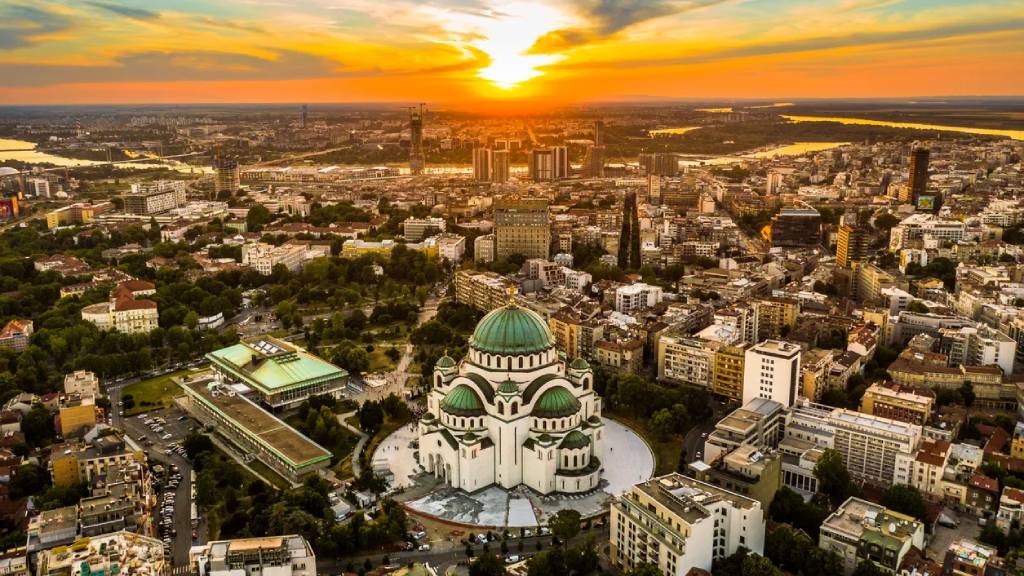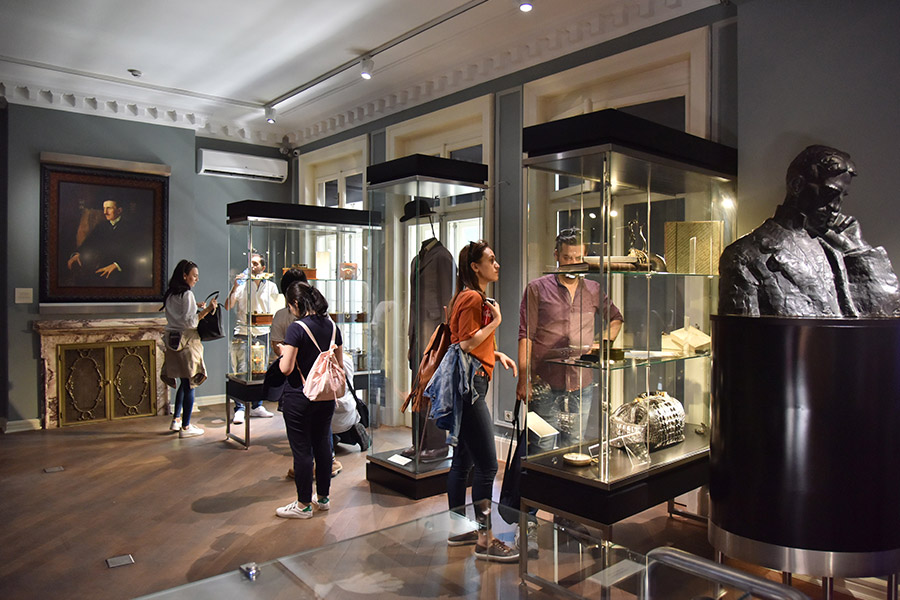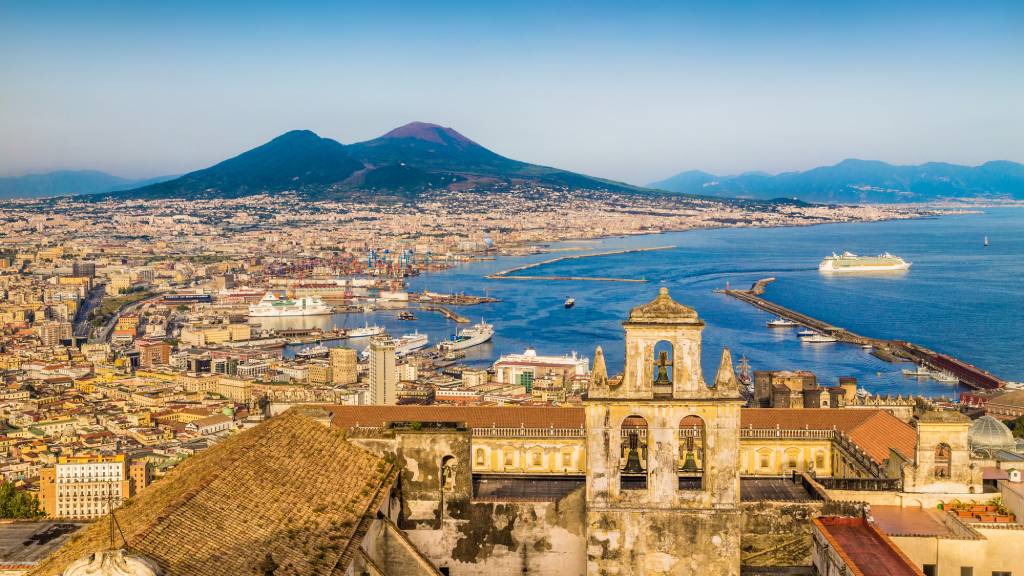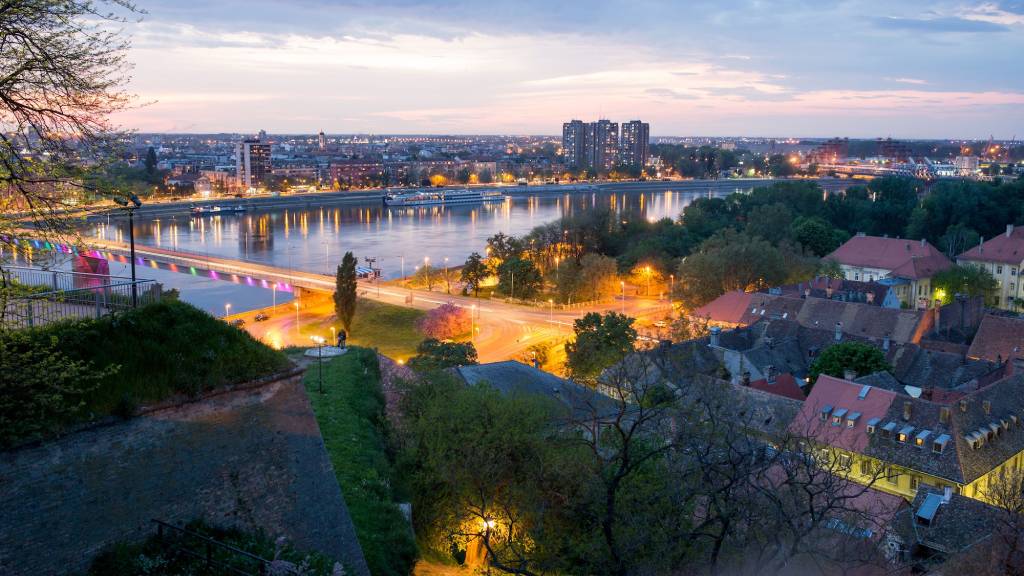
Belgrade is one of Europe’s most exciting, underrated capital cities—a place where Eastern and Western cultures have collided for centuries. The moment I stood on the ramparts of the Kalemegdan Fortress, watching the Sava and Danube rivers meet, I felt the weight of history and the pulse of a vibrant, modern city. It’s got a gritty, resilient energy, fantastic food, and a legendary nightlife scene that truly goes until dawn. It’s a city that has been destroyed and rebuilt dozens of times, and that resilience is everywhere. If you’re looking for a European capital that’s a bit more rough around the edges, fiercely proud, and incredibly welcoming, you’ve found it. Keep reading for my handpicked guide to the ‘White City’.
Why Visit Belgrade?
Belgrade is a captivating blend of Ottoman, Austro-Hungarian, and socialist-era architecture, boasting a rich history and a reputation for having the best nightlife in the Balkans. Here’s why you need to put Belgrade on your list:
- Kalemegdan Fortress: This historic citadel offers not only incredible views of the river confluence but also houses museums, parks, and a deep sense of history.
- Nightlife on the Rivers: Experience Belgrade’s famous party scene on the floating river barges (*splavovi*), which host everything from jazz to techno.
- Skadarlija Bohemian Quarter: Wander the cobblestone streets of this historic quarter, famed for its traditional Serbian music, taverns (*kafane*), and artists.
- Saint Sava Temple: Marvel at one of the world’s largest Orthodox churches, a stunning example of Serbian-Byzantine architecture.
- Kafana Culture: Dive into the traditional Serbian tavern experience, perfect for enjoying slow food, strong drinks, and deep conversations.
Belgrade is a city of resilience and passion, offering a dynamic cultural experience unlike any other European capital.
What Are the Best Things to Do in Belgrade? (For Your First Visit)
Kalemegdan Fortress
Historic fortress at the confluence of the Sava and Danube rivers, offering panoramic views and a lush park for picnics. Explore ancient ruins, museums, and the Victor Monument spanning Roman to Ottoman eras.
Book a guided tour via Viator to uncover its secrets.

Temple of Saint Sava
One of the largest Orthodox churches in the world, with golden domes and intricate mosaics inspired by Hagia Sophia. Climb the viewing platform for city vistas and join a choral service for spiritual immersion.
Join a walking tour via GetYourGuide to experience its grandeur.

Knez Mihailova Street
Bustling pedestrian promenade with neoclassical buildings, shops, and street performers—ideal for people-watching and coffee at historic cafés. Links the fortress to Republic Square with vibrant energy.
Explore on a free walking tour via Viator for a local perspective.

Republic Square
Belgrade’s vibrant central plaza with the National Theater and Prince Mihailo’s equestrian statue, alive with fountains and events. A perfect hub for soaking in the city’s cultural pulse.
Discover via Viator for guided options.

Skadarlija Bohemian Quarter
Cobblestone streets lined with kafanas serving rakija and live gypsy music—Belgrade’s artistic soul where locals mingle in 19th-century charm. Dine on grilled meats under twinkling lights.
Book a nightlife tour via Viator for an authentic evening.

House of Flowers
Tito’s serene mausoleum in a greenhouse at the Museum of Yugoslavia, surrounded by flowers and socialist relics. A poignant glimpse into Yugoslavia’s past with minimal crowds.
Visit with a guided tour via Viator for historical insights.

Museum of Yugoslavia
Artifacts from the Non-Aligned Movement and Tito’s luxury Blue Train—exhibits blend nostalgia with critical views of the former federation’s history.
Explore via TripAdvisor historical tour to dive deeper.

Ada Ciganlija
Lake island turned beach resort with sandy shores, bike paths, and water sports—a summer hotspot for locals with sunset jogs and vibrant vibes.
Check TripAdvisor for outdoor activities to plan your visit.

Nikola Tesla Museum
Interactive displays of Tesla’s inventions like the egg of Columbus—lightning shows and coils spark wonder in his former home for science enthusiasts.
Book a guided tour via GetYourGuide for hands-on fun.

Zemun Neighborhood
Austro-Hungarian riverside enclave with quaint streets, Millennium Tower for Danube views, and cozy eateries—wander Gardoš Hill for sunset charm.
Join a Zemun tour via Viator for a scenic escape.

What’s the Best Month to Visit Belgrade?
The best time to visit the Serbian capital is during the shoulder seasons: **April to June** and **September to October**. These months feature mild and pleasant weather (highs between 60°F and 77°F) ideal for walking the Kalemegdan Fortress and enjoying the city’s lively outdoor cafes (*kafane*) without the intensity of peak summer crowds. While the summer (July–August) is vibrant with outdoor festivals and nightlife, it can be very hot, with temperatures often exceeding 85°F. Winter (November–March) is cold and often snowy, but accommodation prices are lower.
How to Get to Belgrade
Belgrade is served by Nikola Tesla Airport (BEG), located approximately 18 km west of the city center. It’s a key hub for Air Serbia and handles many international flights—check WayAway for direct routes from major cities. From the airport:
- Bus (A1 Minibus): An express minibus that runs directly to Slavija Square in the center. ($3.50, 30–40 min).
- Bus (GSP Line 72): A slower public bus that runs to Zeleni Venac terminal near the city center. ($1.00, 45–60 min).
- Taxi: Use the organized taxi service with a fixed price zone system. Purchase a voucher at the counter inside the arrival hall to avoid scams. ($17–20 to the central Zone 2, 20 min).
- Car Rental: Rent via DiscoverCars if planning day trips to Novi Sad or mountains.
The main hub for regional train and long-distance buses is the Belgrade Central Station (Beograd Centar/Prokop), though the main bus station is still near the Sava River, making train and bus travel easy.
How to Get Around Belgrade
Belgrade is a sprawling city, and while the historic central area (Stari Grad, Dorćol, Skadarlija) is highly walkable, you will need public transport to reach New Belgrade or Zemun. The public system (GSP) is composed of trams, trolleybuses, and buses.
- Public Transport (GSP): Use a daily ($3.50) or weekly pass, or purchase a digital ticket via the city’s official SMS payment system. A single ride is about $0.80.
- Walking: Essential for exploring Kalemegdan Fortress, Skadarlija, and Knez Mihailova street.
- Taxis/Ride-share: Taxis are readily available; be sure to use established companies or local ride-share apps like Yandex Go or CarGo for competitive pricing. ($4–$8 for central rides).
Tips for Tourists Using Transport:
- Always use the official airport taxi voucher system to guarantee a fixed price.
- Traffic can be heavy during peak hours, especially crossing the river to New Belgrade. Factor this into travel times.
- Validate your public transport ticket immediately upon boarding to avoid fines.
Conclusion: Belgrade is a dynamic, gritty, and historic capital where East meets West. Embrace its energetic chaos by starting your exploration on foot in the Old Town, then utilize the extensive bus and tram network to discover the riverside promenades and brutalist beauty of New Belgrade. Dive into its vibrant nightlife and deep history. Discover the best of the ‘White City’ with our premium Belgrade guide!
Note: This article contains affiliate links. If you purchase something I’ve recommended, I’ll earn a small commission at no extra cost to you. I really appreciate your support and I hope this guide helps you ♡









